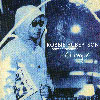ROBBIE ROBERTSON : HOW TO BECOME CLAIRVOYANT
- Straight Down the Line
- When the Night Was Young
- He Don't Live Here No More
- The Right Mistake
- This Is Where I Get Off
- Fear of Falling (with Eric Clapton)
- She's Not Mine
- Madame X
- Axman
- Won't Be Back
- How to Become Clairvoyant
- Tango for Django
Bonus Tracks : - the right mistake
- he don't live here no more
- fear of falling (with Eric Clapton)
- this is where i get off
- madame x
- houdini
Label : 429 Records
Release Year : 2011
Length : 87:55
Review (AllMusic) : How to Become Clairvoyant is Robbie Robertson's first album since 1998's Contact from the Underworld of Red Boy. In the interim, he served as musical director for some Martin Scorsese films, produced soundtracks, and worked as an A&R man for Dreamworks. Co-produced by Robertson and Marius de Vries, the 12-song set boasts an impressive guest list. Eric Clapton makes seven appearances on guitar, duets on "Fear of Falling," co-wrote three tunes, and contributed an instrumental ("Madame X," which is minimally but beautifully textured by Trent Reznor). Steve Winwood, Robert Randolph, Angela McCluskey, and Tom Morello also appear. Bassist Pino Palladino, drummer Ian Thomas, and pianist Martin Pradler are the house band on a Robertson album typically saturated in rich, warm production, sonic flourishes, and ambient atmospheres. Despite a preponderance of guitars, this isn't a cooking session, but an uncharacteristically autobiographical song cycle that addresses not only Robertson's life and experiences, but those of his friends, heroes, and collaborators. It opens promisingly enough with the rootsy "Straight Down the Line," with rocking steel guitar solos by Randolph. Its lyrics deal with what attracted Robertson to the musican's calling. The meld of nocturnal guitars, synthetically funky beats, and taut yet off-kilter melody create the musical backing for "He Don't Live Here Anymore," a song that frankly discusses substance abuse and addiction. "When the Night Was Young" is a signature Robertson ballad. Though it commences with his trademark guitar sound, it tells his version of his generation's story in a laid-back way. Its lilting hook relies on country and blues; paired with 21st century production tropes, the music creates an emotional palette of longing. That said, even though romances with historical and archetypal pasts have been strong suits in his songwriting, these lyrics are self-indulgent, nostalgic, sappy. "This I Where I Get Off" addresses for the first time - in song anyway - his reason for breaking up the Band, and features fine guitar interplay between Robertson and Clapton. "She's Not Mine" is a nakedly honest love song. Despite its near-cinematic production, where the guitars are all but buried, its emotional content comes through via fine intuitive organ work by Winwood. "Axman," a tribute to Robertson's guitar heroes, is a star-studded name-check list that's embarrassing; even Morello's excellent guitar work can't redeem it. The angular, funky, nocturnal, funky R&B in the title track is among the more subtle highlights here; it contains a head-scratcher of a melody with the best lyrics on the set, and excellent exchanges between Randolph and Robertson. The instrumental "Tango for Django" closes with another over-the-top production that employs nuevo tango as artifice. Robertson's gut-string guitar and keyboards are backed by cello, violin, accordion, bass, and drums, all highlighted by an orchestra. It's a fitting conclusion, even if it is gratuitous. How to Become Clairvoyant is a sometimes compelling record, but it's a flawed one, too, with moments of beauty countered by bloated lyrical and production excesses. Ultimately, it feels as much like an exercise in self-justification as it does in personal revelation.
